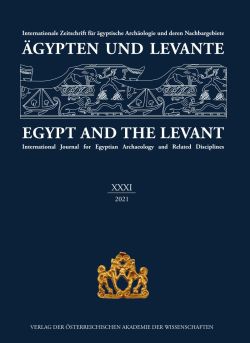
Ägypten und Levante 31, pp. 451-472, 2021/12/28
Internationale Zeitschrift für ägyptische Archäologie und deren Nachbargebiete
International Journal for Egyptian Archaeology and Related Disciplines
The present paper deals with the interpretation of the antichambre carrée, the room that constitutes a typical component of the ‘standard’ pyramid temples of the Old Kingdom (from Sahura onwards) and Middle Kingdom. The paper’s main scope is to question the broadly accepted theory on the meaning of the room’s decoration, namely that it evokes the sed-festival, an act of regeneration of the king’s reign. For this purpose, the thorough examination of the antichambre carrée’s decorative layout – assessing all known examples, with the focus not only on figural representations but also on the text – is combined with data obtained from related sources, including the Djoser shrine court within his step-pyramid complex, the Palermo Stone, the depictions of the sedfestival in Niuserra’s sun temple at Abu Ghurab and, finally, the ‘birth cycle’ of Hatshepsut’s temple at Deir el-Bahari. The major conclusion emerging from this comparison is that while the main message of the antichambre carrée is indeed the manifestation of the king’s rule over two parts of the country, the ritual acts on display could have taken place in royal ceremonies other than the sed-festival, the prime candidate being the ‘Appearance of the King of Upper and Lower Egypt’, an event that seems to have commemorated the act of coronation.
Keywords: pyramid temple, antichambre carrée, sed-festival, coronation, Nekhbet, royal ancestors